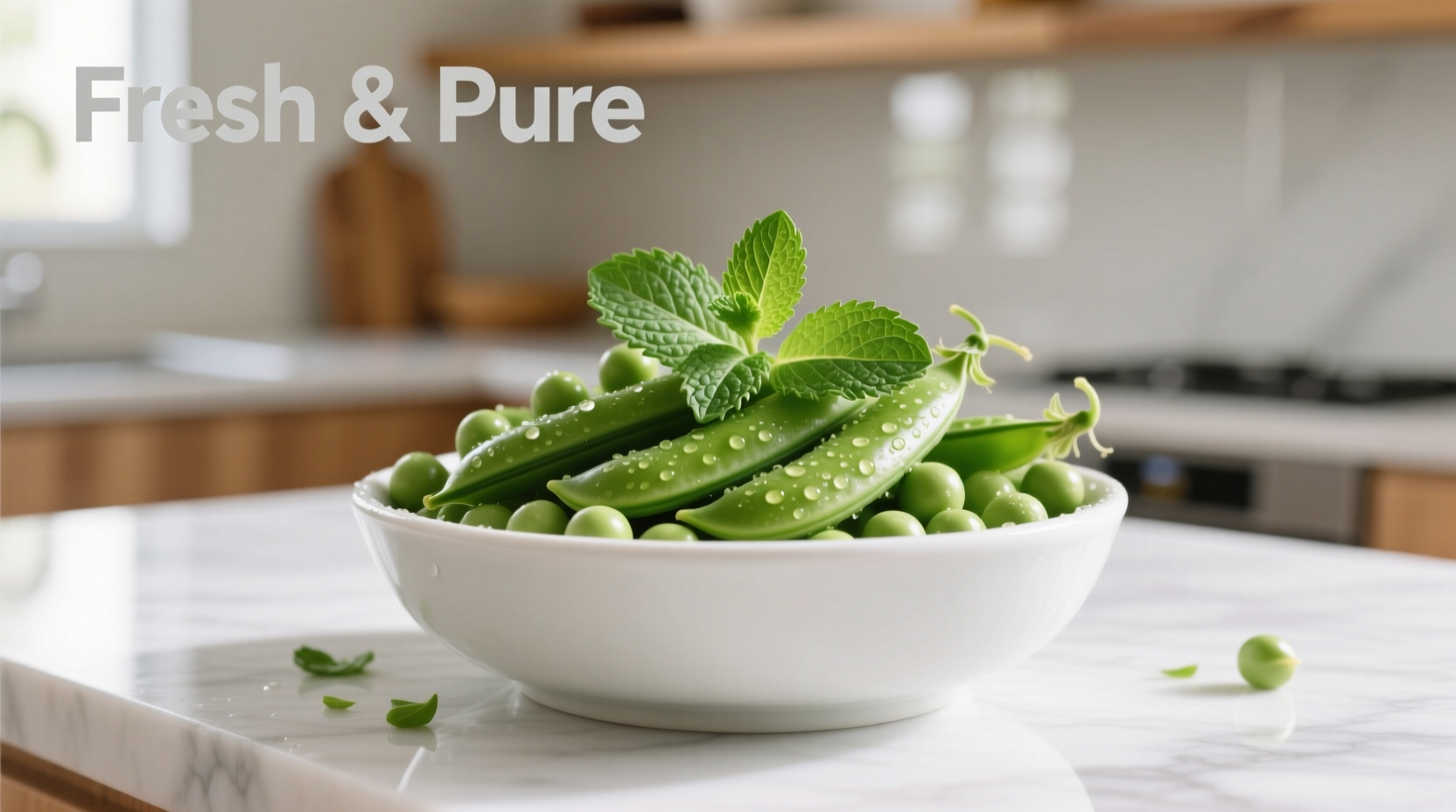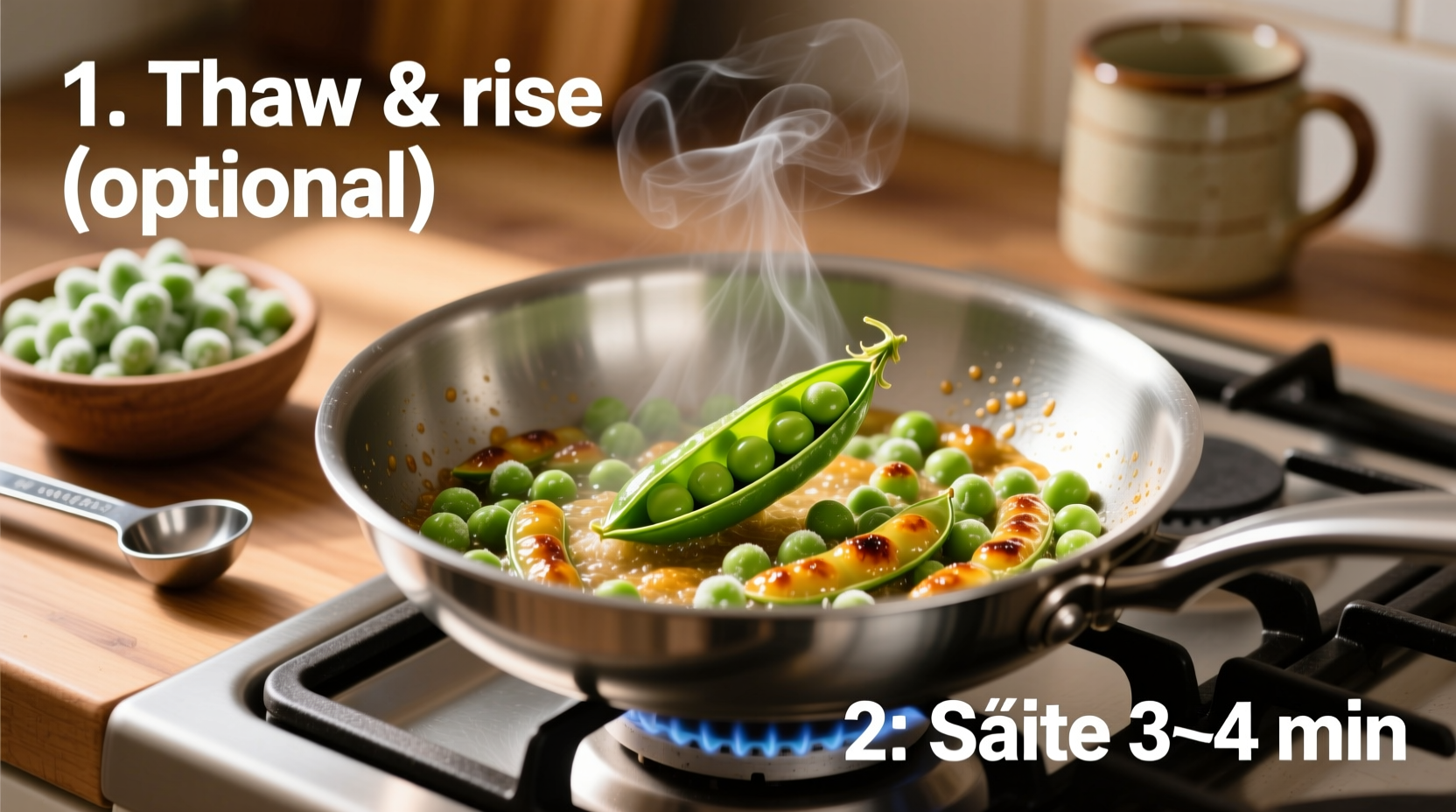Perfectly cooked frozen peas take just 3-5 minutes using boiling, steaming, or microwaving methods. Never thaw first—cook straight from frozen for best texture and nutrient retention. Add a pinch of salt and a teaspoon of butter or mint for enhanced flavor.
Why Frozen Peas Are Kitchen Heroes
Frozen peas aren't just convenient—they're often more nutritious than "fresh" peas sold in stores. Modern flash-freezing technology locks in vitamins within hours of harvest, preserving up to 90% of vitamin C compared to fresh peas that lose nutrients during transportation and storage. According to USDA food safety guidelines, frozen vegetables maintain quality for 8-12 months when stored properly at 0°F (-18°C).
| Cooking Method | Time Required | Water Needed | Best For |
|---|---|---|---|
| Boiling | 3-4 minutes | Cover peas by 1 inch | Large batches |
| Steaming | 4-5 minutes | 1 inch in pot | Nutrient retention |
| Microwaving | 2-3 minutes | 2 tbsp per cup | Speed and convenience |
| Sautéing | 5-6 minutes | None | Flavor development |
Step-by-Step Cooking Methods
Boiling Method (Best for Large Batches)
Bring 4 cups of water to a rolling boil in a medium saucepan. Add 1 pound of frozen peas directly from the freezer—never thaw first. Cook for exactly 3-4 minutes until vibrant green and tender-crisp. Drain immediately and rinse with cold water to stop cooking. This method follows FDA food safety recommendations for proper vegetable preparation.
Steaming Method (Maximum Nutrient Preservation)
Add 1 inch of water to a saucepan with a steamer basket. Bring to simmer, then add frozen peas. Cover and cook for 4-5 minutes until tender. The minimal water contact preserves water-soluble vitamins like B and C. Research from the Journal of Food Science shows steaming retains up to 25% more nutrients than boiling.
Microwave Method (Fastest Option)
Place frozen peas in a microwave-safe bowl with 2 tablespoons of water per cup of peas. Cover with a microwave-safe plate. Microwave on high for 2-3 minutes for one cup, stirring once halfway through. This energy-efficient method uses 75% less energy than stovetop cooking according to Energy Star data.

Pro Flavor Enhancements
Elevate your basic cooked peas with these chef-approved additions:
- Classic finish: 1 teaspoon butter + pinch of salt + fresh mint leaves
- Chef's secret: Sauté minced shallots in olive oil before adding peas
- Creamy version: Stir in 2 tablespoons ricotta or Greek yogurt after cooking
- Umami boost: Add 1/2 teaspoon nutritional yeast or Parmesan rind while cooking
Avoid These Common Mistakes
Even simple tasks can go wrong. Steer clear of these frozen pea pitfalls:
- Overcooking: Peas turn mushy within 30 seconds of becoming tender—set a timer
- Thawing first: This creates soggy peas and leaches nutrients into melting water
- Adding salt to cooking water: Makes peas tough—season after cooking instead
- Crowding the pan: Cook in single layers for even heating
Storage and Reheating Tips
Cooked peas keep well for meal prep. Cool completely within 2 hours of cooking, then store in airtight containers:
- Refrigerator: Up to 3 days (best quality within 48 hours)
- Freezer: Up to 6 months in portion-sized containers
- Reheating: Microwave with 1 tsp water per cup for 60-90 seconds
For food safety, never leave cooked peas at room temperature for more than 2 hours. The FDA recommends discarding perishable foods left in the "danger zone" (40°F-140°F) for over two hours.
Simple Recipe Ideas
Transform cooked peas into complete dishes with these quick ideas:
- Pea & Mint Risotto: Stir 1 cup peas into risotto during final cooking stage
- Pea Soup: Blend 2 cups peas with 1 cup vegetable broth and 1/4 cup mint
- Pea Salad: Toss cooled peas with diced radish, lemon zest, and olive oil
- Pea Pasta: Mix with spaghetti, lemon juice, and grated Pecorino Romano











 浙公网安备
33010002000092号
浙公网安备
33010002000092号 浙B2-20120091-4
浙B2-20120091-4